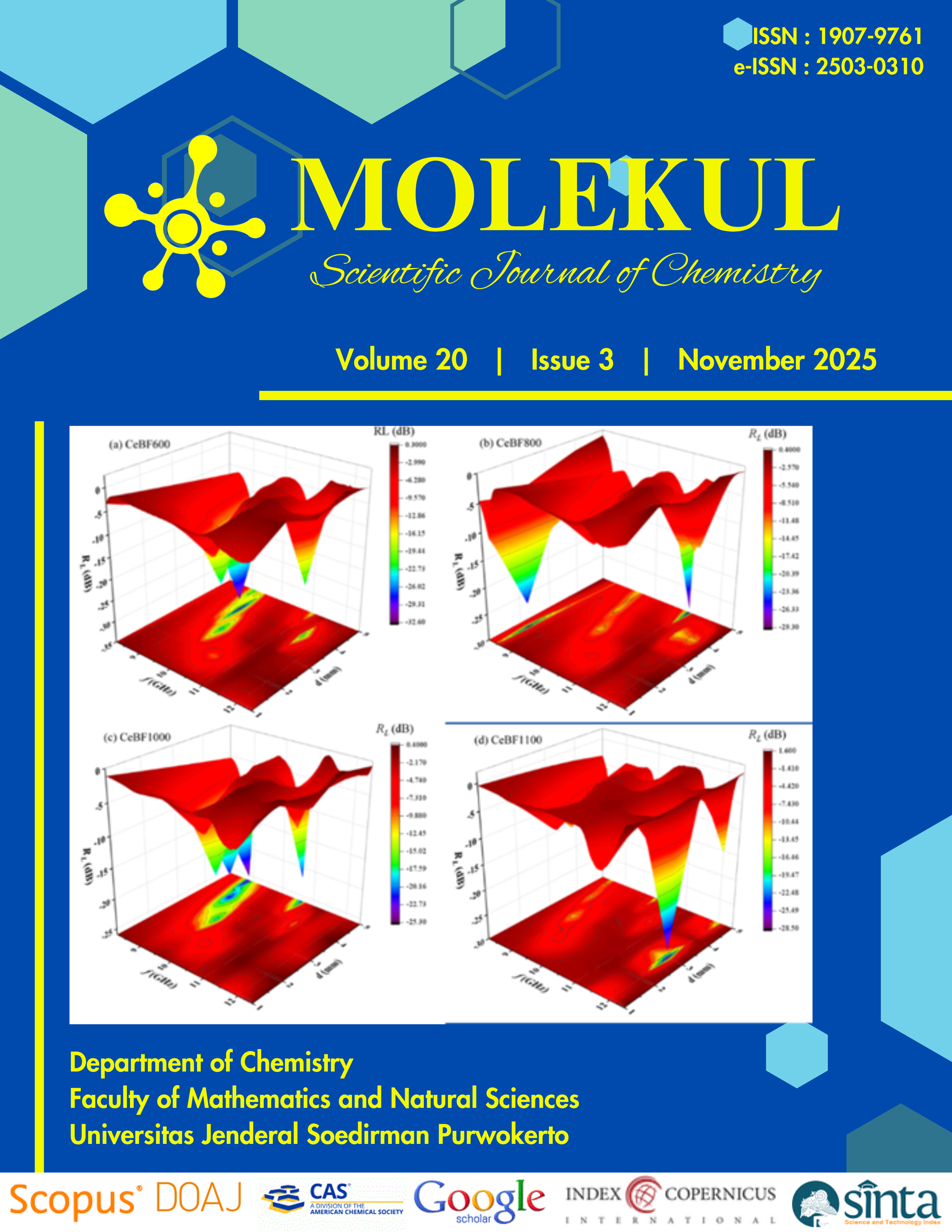Characteristics of Purified Lignin Obtained from Metroxylon Sagu Palm Fronds, Oil Palm Fronds, Cratoxylum arborescens, and Eucalyptus pellita via Soda-Methylanthraquinone Pulping
Purified lignin from M. sagu palm fronds, oil palm fronds, C. arborescens, and E. pellita
Abstract
ABSTRACT. Lignin is a valuable material that can be obtained from the black liquor generated during dissolving pulp production from lignocellulosic materials. Lignin can be used to produce biopolymers, fuels, value-added chemicals, and other functional materials. This study investigates the isolation and characterization of lignin from four lignocellulosic biomass sources i.e. Metroxylon sagu palm fronds (SPF), oil palm fronds (OPF), Cratoxylum arborescens, and Eucalyptus pellita using environmentally friendly soda–methylanthraquinone (soda–MAQ, 160 ºC for 1.5 h) pulping followed by acid precipitation with hydrochloric acid (pH 2.0-2.5). The lignin yield varied among the materials (68.3-88.8%), with E. pellita showing the highest recovery. SEM analysis revealed distinct differences in lignin morphology, where E. pellita lignin exhibited a more condensed and homogeneous structure compared to the more fragmented forms from non-wood biomass. FT-IR spectra confirmed the presence of guaiacyl, syringyl, and hydroxyl phenol units in all samples. EDX analysis supported the natural lignin composition, especially in E. pellita, OPF, and C. arborescens. Among the four sources, lignin from E. pellita demonstrated the greatest potential for value-added applications, followed by C. arborescens and OPF. These findings provide valuable insight into lignin recovery from diverse biomass and its suitability for further bioproduct development.
Keywords: Biomass, characterization, dissolving pulp, lignin, soda-methylanthraquinone
Authors agree with the statements below:
- Authors automatically transfer the copyright to the MOLEKUL journal and grant the journal right of first publication with the work simultaneously licensed under a Creative Commons Attribution 4.0 International License (CC BY 4.0).
- Authors are able to enter into separate permission for the non-exclusive distribution of the journal's published version of the work (e.g., post it to an institutional repository or publish it in a book), with an acknowledgment of its initial publication in this journal.













